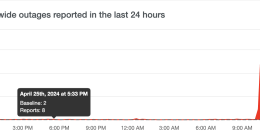
Big corporations are starting to think like disruptors, adopting ‘codeless integration’ processes.
Opinions expressed by Entrepreneur contributors are their own.
It’s a common refrain: Corporations are bulky and bureaucratic while startups are agile. The conventional wisdom has been reality, for the most part. It explains how startups like Tesla grew up to disrupt industries dominated by a few, leading firms. Enterprise businesses simply don’t have the flexibility to pivot like startups do.
The landscape seems to be changing — albeit slowly, in typical enterprise fashion. Kimberly-Clark, for example, routinely organizes “expert acceleration sessions” in which thought leaders chellenge business teams to think like startups. Similarly, Whirlpool hosts i-mentors who work with business teams to cultivate an innovation mindset and challenge market “orthodoxies.”
The objective here is obvious: to prevent large and successful organizations from having their own Kodak moments.
Too big to pivot?
The opportunity cost often proves too high for corporate leaders. Why pursue the dream of a startup when the organization already rakes in millions with a successful, well-established product?
Massive organizations are slowed by a bureaucracy of their own making. They typically spend millions of dollars to pursue a business goal. Changing course, then, is a million-dollar decision in another direction. Leaders can’t make those moves on a whim. Innovation requires large corporations to integrate new products with legacy systems and processes, including the tightly connected technology to support it all. Pivoting costs money and time. And in an enterprise group, it demands exponentially higher investments, compared to startup innovations.
Related: Commitment to Innovation Is How Legacy Companies Stay Agile
A new approach.
Recently, though, a number of enterprises have started to adopt “zero code” or “codeless” integration strategies. This shifts the innovation focus within organizations, moving it from back-end or technology teams to more front-of-house operations and business teams. Research leader Gartner has coined a term for this trend: citizen integration. In this model, citizen integrators leverage self-service systems to innovate — without having to rely on technology teams to do the job for them.
How could it look in the real world? Uber and its millions of customers provide a solid example. A marketing manager at Uber might be interested to know if the company can increase ride rates by sending a coupon just before a customer is ready to travel. Marketers typically take such ideas to developers, who then build the necessary infrastructure to execute a campaign.
Codeless integration interrupts the cycle, shortening it. The Uber marketer instead could consult a customer list and prepare a subset roster of all riders who have called a cab between 6 p.m. and 7 p.m. over the past few days. Then, the marketer could launch a trial campaign by using Uber’s push notifications to share a coupon. Self-service data sets and technology reduce the turnaround from several days to a matter of minutes.
Related: What Self-Service Business Intelligence Is and How to Use It
Saving millions.
Codeless integration does the same for costs. It effectively allows an enterprise to overcome the limitations of its mammoth size and embrace disruption to stay ahead of the curve. Business operations don’t have to wait for IT. That frees up technology teams to concentrate on highly productive, strategic tasks. Error-handling and exceptions can be automated to further prioritize IT time and resources.
When all of this comes together, customers and partners enjoy a superior service-delivery experience. This ultimately affects the enterprise’s bottom line and helps save millions.
Startups Zapier and IFTTT are popular codeless integration services among consumer-end businesses. Adeptia and others offer similar tools at a larger scale for enterprise businesses. Some large corporations take the best from all worlds, using self-service integration tools to connect internal systems with third-party services such as SAP and Salesforce.
Related: Stop Looking at Your IT Department as a Cost Center
High stakes, higher costs.
Most large organizations still prefer the traditional IT route for high-stakes projects and innovations — for good reason. These projects enjoy generous budgets to allocate resources and marketing. Leaders may deem it unnecessary to divert funds toward a bootstrapped alternative like codeless integration.
This is, however, a myopic way to look at business strategies. Startups have begun disrupting every sphere of the economy. It won’t be long before large, enterprise players realize money and resources can take them only so far. Agility and execution are paramount in this race. Any strategy that helps businesses cut time and costs could make the difference.
This article is from Entrepreneur.com








